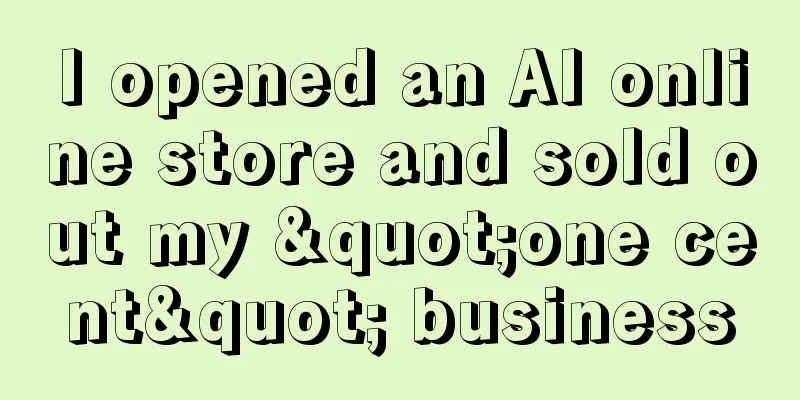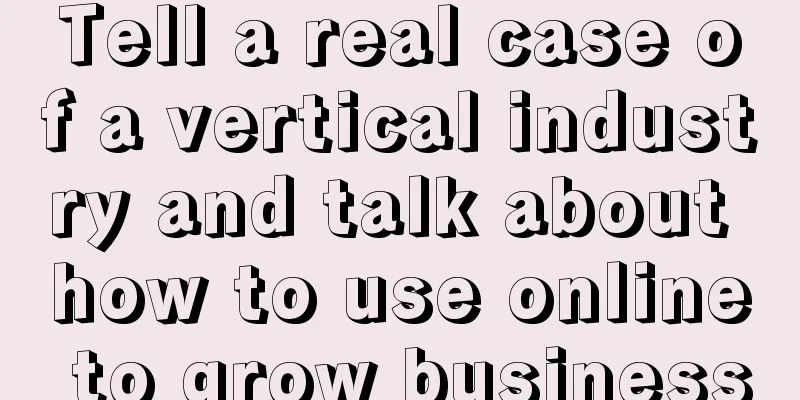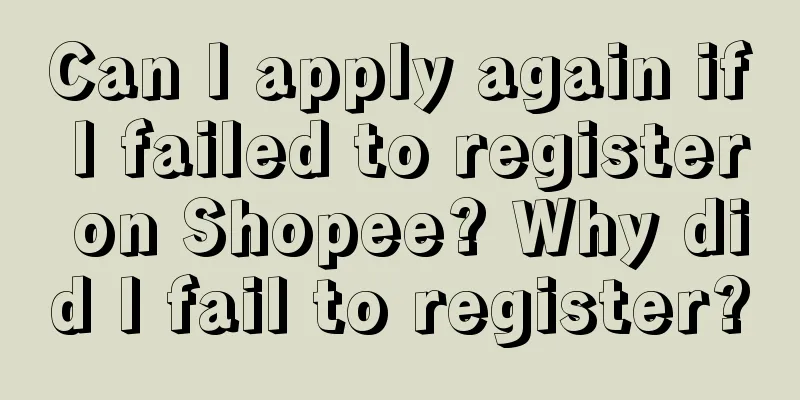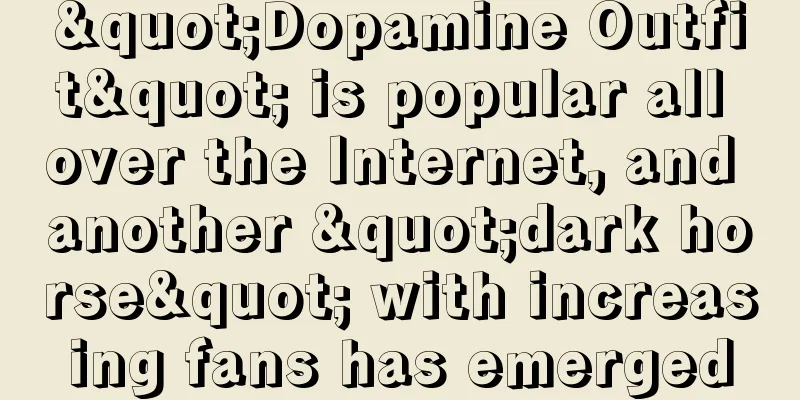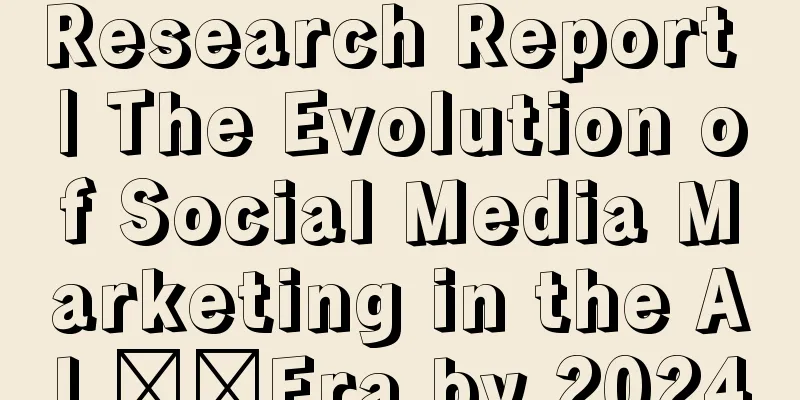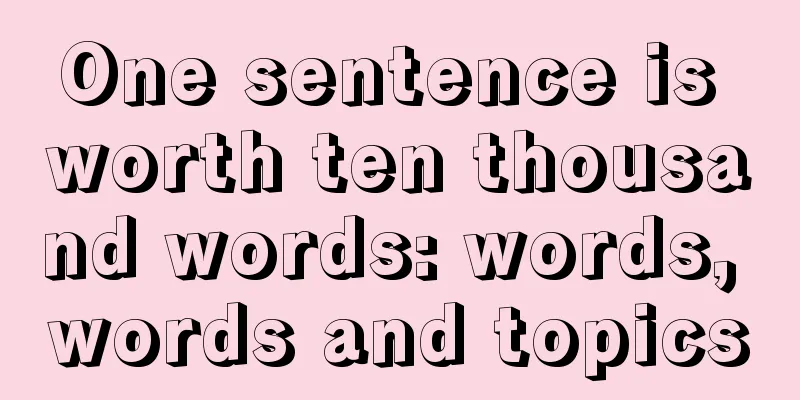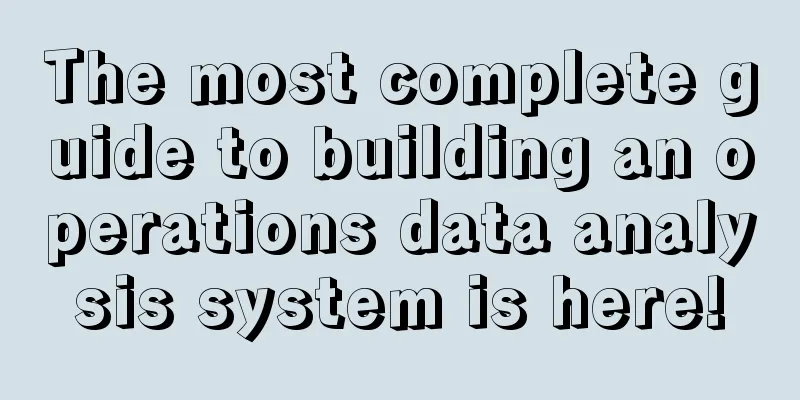B2B industry data analysis, this is the most complete idea
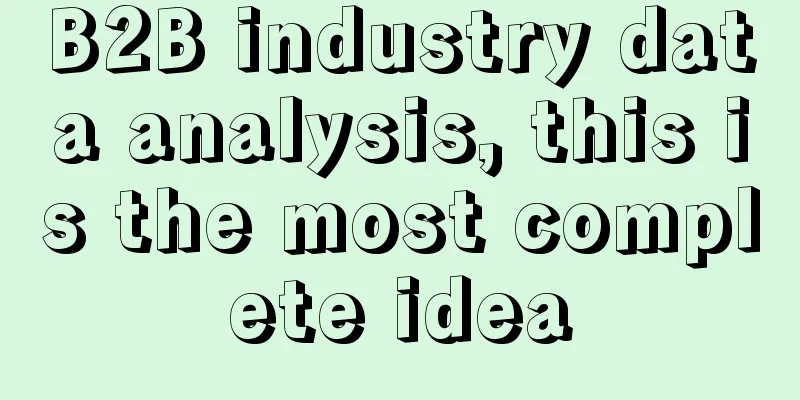
Among the more than 1,000 questions on Knowledge Planet, how to do B2B analysis is the most frequently asked and most common one. There are examples of retail e-commerce everywhere on the Internet, but these are all B2C businesses. Of course, there are some students who can't even tell the difference between B2B and B2C, and just feel: My data is weird, how should I analyze it? Today, I will give a systematic answer. 01 The intuitive difference between B2B and B2CA typical B2C scenario: Xiao Ming wants to drink milk tea, so he walks to a milk tea shop. Xiao Ming: How much is a cup of milk tea? Shop assistant: 15 yuan Xiao Ming: OK, buy one. Xiao Ming scans the code to pay Xiao Ming: It tastes really good! I'll buy another cup If you use B2C thinking to apply to B2B, this is the style: Xiao Ming wanted to open a milk tea shop and walked to the door of a milk tea shop. Xiao Ming: How much would you charge me if I transferred the entire milk tea shop to me? Boss: 500,000 Xiao Ming: OK, let’s buy one. Xiao Ming threw a sack of banknotes at the boss's face Xiao Ming: This store is great. I’ll buy 2 more! Xiao Ming threw out another sack of banknotes... Doesn’t it look funny? The real B2B scenario is: Xiao Ming wrote code until he was 35, but was fired because he was too old. I thought about working but found that everywhere: "Age 35 and under" What to do? I found an advertisement titled "Join a milk tea shop and earn a million a month and become a boss easily." then: After thinking it over and over again, I calculated it for 5 days. Contact franchisee, 5 days of nonsense Contacted another franchisee and talked nonsense for 5 days Double contact another franchisee, bullshit for 5 days Discuss drinking and eating barbecue with friends for 5 days Post on Zhihu and read comments for 5 days Asking my wife for money, I knelt down for 5 days after the quarrel Asking parents for money, raging and talking for 5 days "This is the only time in my life that I can stand up!" Roar for 5 days … Just to collect that sack of money, Xiao Ming has experienced the ups and downs of life, and his heart has changed a lot. Not to mention the subsequent franchising, decoration, recruitment, traffic diversion, selling, bad business, dying struggle, bankruptcy, signing up for a 21-day front-end training class with zero foundation and a monthly income of 50,000, and unemployment... It's not like buying a cup of milk tea, you can buy it whenever you want, how easy! Large amount, long process, and many decisions are the intuitive difference between B2B business and B2C business. (The story is purely fictional, if there are any similarities, it is just because there are too many public account articles that sell anxiety). 02 Business characteristics of B2BB2B business is different from B2C, and there are three main differences. 1. Serving personal needs vs. serving business goalsB2C businesses mostly serve individual consumption needs, most of which are daily necessities. For example, when an individual buys milk, he only needs to consider whether it tastes good or not. B2B business serves the business objectives of enterprises. If you buy milk as raw material, you have to consider whether the dairy products you make can be sold and make a profit. If you give it to employees to drink, you have to consider whether the employees like it and whether there will be complaints. This is the most essential difference between B2B and B2C. If we want to understand B2C business, we often assume that we are consumers and experience the process. But if you want to understand B2B business, you cannot assume that you are a consumer, you have to think from the perspective of the operator. Otherwise, you will make the joke at the beginning of "carrying a sack of money to buy a milk tea shop". 2. Simple Decisions vs. Complex DecisionsB2C is about individual consumption, so you can make your own decisions. But B2B is completely different, as there are many decision-makers. If you want to purchase milk, you have to go through the bidding process, the financial process, the logistics process, the warehouse management process, and submit it to the leaders at all levels for approval. If it is a small business, it is fine, but if a large enterprise dares to skip a process, the audit will come to the door in minutes... 3. Cash on delivery vs after-sales serviceB2C is a personal consumption, where money is exchanged and goods are delivered. But B2B is often much more complicated, and signing a contract is only the first step. Subsequent delivery also involves various troubles, such as the first payment, mid-term payment, and final payment. The example of buying milk is the simplest form. If you are in the software development service industry where Mr. Chen works, you can experience the long process from signing to delivery (as shown below). 4. Repeat Purchases vs. PartnersB2C is personal consumption, the things you buy are cheap, and you don’t have to worry about it. For example, if you buy milk and it doesn’t taste good, you can just change the brand next time. For enterprises, if the user runs away today, I can give a discount tomorrow and he may come back. But B2B is completely different. If you sign an annual cooperation agreement, once you lose a customer, you will have nothing for the whole year. If a customer signs a 3-5 year long-term cooperation, once you lose the customer, they may not have any business for 3-5 years. On the contrary, if it is an industry leader, once you win the customer, you can take most of the orders in the entire industry. B2B is a winner-takes-all situation. Therefore, we must make an analogy. We can compare B2B business to B2C business such as house decoration. It also has large purchase amounts, long decision-making processes, complex decision-making mechanisms, down payments and final payments, a long delivery process, and demand is closed once the purchase is completed (but it also reflects the marketing of many large customers). Teacher Chen still strongly recommends that you spend more time understanding the business details when doing B2B analysis, because many business processes will also change and be customized according to customer needs. The analogy is only suitable for teaching, not for work. 03 Basic Analysis Framework of B2BAll data analysis cannot avoid the five questions of how much, what, why, what will happen, and how. The same is true for B2B analysis. However, B2B analysis will spend more time on how much. First, the customer organizational structure, decision-making process, and workflow involved in B2B procurement are particularly complex and require additional information; Secondly, the value of each customer is huge, and if they are lost, the consequences will be severe. There is no room for repeated experiments, and every customer must be won over. Third, customers will not purchase frequently, and once a relationship is formed, it is difficult to change. Therefore, unlike B2C, there is no customer information to be collected slowly, and no customer needs to be slowly tested. RFM data cannot be used to speculate on the future (most R) 365 days, F=1). What B2B needs is a precise strike, a fatal blow. The specific detailed requirements are divided into three parts: 1. Customer portraitAs shown in the figure above, B2B customer portraits are mainly based on the customer's enterprise strength, demand scale, process length, and negotiation object. Unlike B2C, B2B customer portraits are easier to collect. Often, information related to these companies can be obtained through customer visits, corporate annual reports, industry reports, and related company introductions. Especially frontline sales people are very clear about this (whether they are willing to tell the company is another matter). There is no need to worry about "stealing personal privacy" and other issues. There are also differences in the use of user portraits. Many B2C products are necessities, and users must have demand for them. The question is: which brand, which SKU, and which price is in demand? Therefore, the essence of B2C user portraits is to screen users with high response rates for specific products. If B2B customers have no demand, then it really doesn’t exist. How to determine the needs of B2B customers? First, we can judge from the customer's business situation, enterprise scale, and development trend. For example, when an enterprise purchases raw materials for production, the order amount must be proportional to its own sales. For example, when selling software, a company with tens of millions of dollars does not need ERP, but a company with hundreds of millions of dollars will need it. Second, we can judge from the relationship between the customer and us. There are a lot of gray operations in the B2B field, which is also a common thing. 2. Follow-up processIt should be noted that once a B2B procurement demand is issued, it will enter the countdown stage. Customers will not make selections indefinitely. The longer the demand is issued, the more suppliers the customer will see, the higher the chance of a deal, and the more specific the screening. Therefore, after receiving a sales lead, it is very important to determine the time period of the lead and follow up as soon as possible. The process of following up on sales leads is complicated. For process analysis with more than 2 steps, the funnel analysis method can be used. In the pre-sales stage of B2B, the basic idea of following up on the process analysis is also the funnel analysis method. The core of the follow-up process is signing a contract. Therefore, for a single lead, it is necessary to pay attention to which stage the follow-up has reached and the specific reasons for failure (as shown in the figure below). For numerous leads, we need to classify them and look at the signing rates and amounts of different regions, industries, companies, and sources of leads, so as to make targeted plans, see which regions and special types of companies we want to target, and discover problems from changes in the signing situation in an industry (as shown in the figure below). 3. After-sales serviceAs shown in the figure above, the B2B after-sales process is also divided into stages, but the funnel analysis method is not used. Because in principle, it is not allowed to fail to return the money during the after-sales stage! You have to return the money even if you die! Therefore, the B2B after-sales process analysis is more about prompting risks, predicting problems, and paying attention to progress. 03 Difficulties in B2B AnalysisDifficulty 1: Lack of collection and organization of customer information. The customer information is gone except for the company name and phone number. The position of the person who connected the phone is unknown. Other information about the company is also unknown. The worst thing is that even the source location and source time of the customer information are unknown. The customer's needs have been closed, but they are still stupid enough to come to the door to ask... The final result is naturally miserable, and there is no way to analyze the data. Difficulty 2: Lack of collection and organization of follow-up processes. There are two common situations. One is that the salespeople are too lazy to record: when they followed up, who they followed up with, what the follow-up feedback was, what the next round of follow-up would be, they have no idea. The second is that the salespeople rush to follow up in order to cope with the inspection. If they are asked to call the customer within 3 days, they rush to call on the third day. If they are asked to fill in information, they rush to fill it out on the day before the end-of-month inspection. The data they submit in the end is garbage. Difficulty three: Lack of collection and organization of after-sales information. After-sales service is busy with delivery, so who cares about providing feedback... Yes, the biggest difficulty in B2B analysis is: no data. Nothing. Only simple data at the moment of signing the contract is recorded, and then it is taken for granted that with just such a small amount of data, various problems can be analyzed. You ask other departments to cooperate, and they have a lot of reasons:
Essentially, it is caused by the irregular management of B2B business. Because the B2B process is long and has many details, it requires a lot of manpower. Because there is a lot of manpower involved, there are a lot of areas that need to be strengthened. In the past 20 years of the development of the land grab economy, most companies have not established a sound process, and even regarded ignorance as personality and various gray operations as reasonable. As a result, by 2024, B2B business management is still at a primitive stage, naturally there is no reliable data, and no effective analysis. Of course, a small part of the responsibility comes from the rookie data analysts. Their favorite thing to say is: "I saw the tutorials online, don't they all use RFM model + k-means clustering? I just throw the contract amount + customer name into it and cluster them... Eh? Why does the result look so strange? Are there any big guys in the group? Are there any big guys in the B2B industry? In the B2B industry, the most authoritative, scientific and reasonable number of categories for Kmean clustering is 4 or 6? Urgent! Waiting online! Paid!" ——Without combining it with the specific business process, you just expect to copy a general, authoritative, and common practice from the Internet every day. There is no hope that this can be suitable for the company's situation. 04 ConclusionThe above is the basic idea of B2B analysis. Please note that B2B itself is also a huge category. According to the following dimensions, many types can be subdivided:
There are many differences in the specific scenarios among these different types, and one article certainly cannot cover them all. Here is a brief introduction to let you feel the difference between the two thinking modes. If you are interested, I will share more later. |
<<: We actually encountered Xiaohongshu's "low-end business war"
>>: Brand Marketing Strategy in “It” Economy
Recommend
Good ideas = the best moment
Introduction: This article focuses on "advert...
How to build a traffic-generating and customer-acquisition system for Xiaohongshu
This article analyzes the core strategies of Xiaoh...
What products are good for cross-border e-commerce? Any good recommendations?
After e-commerce became popular, WeChat business a...
How to find the source of goods for cross-border e-commerce? Method introduction
Cross-border e-commerce is becoming more and more ...
How hard do fresh graduates work to get a job at a big company during the autumn recruitment?
Campus recruitment is a long-term battle, and also...
Creativity or delusion? Don’t panic when facing AI hallucinations
Recently, Xiao Ai captured the guessed answer by s...
Going to the big market, eating a big banquet, short videos show "the temptation to go home"
The Spring Festival is approaching, and on short v...
Tea sellers are frantically diverting traffic to private domains
As the Spring Festival approaches, the amount of a...
Can you make money on Amazon without a source of goods? How to do it without a source of goods on Amazon?
Now more and more people are starting to do no-sou...
We discussed these 6 issues regarding the future development trend of Xiaohongshu
This article analyzes and explains the future deve...
You have never worked in our industry, so why are you qualified to provide me with marketing consulting?
Have you ever had the following questions: Why do ...
What are the problems with temu? Is temu cross-border e-commerce worth doing?
The temu cross-border e-commerce platform has its ...
How to optimize Shopify product titles? What should you pay attention to?
There are many cross-border e-commerce platforms a...
How to receive payment through cross-border e-commerce? Super detailed operation method
As a way of starting a business, cross-border e-co...
Which holiday does Amazon offer the biggest discounts? How is the commission calculated for discounted products?
On the Amazon platform, as sellers, we can promote...
